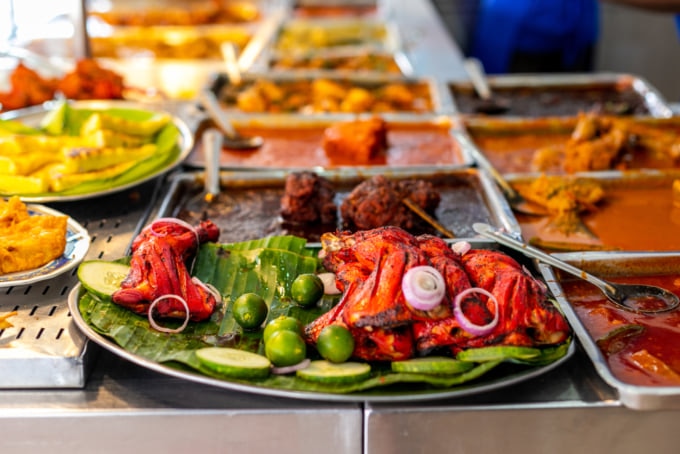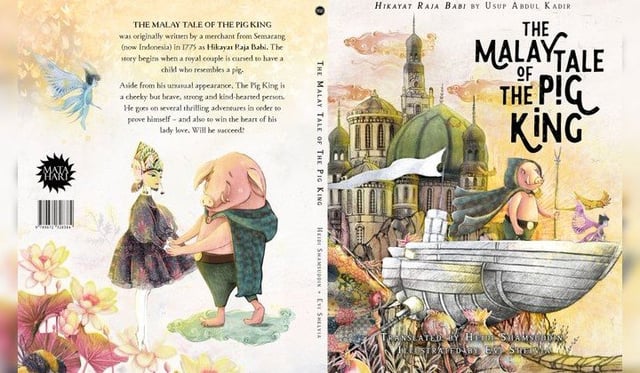Exploring Malaysia’s Religious Sites
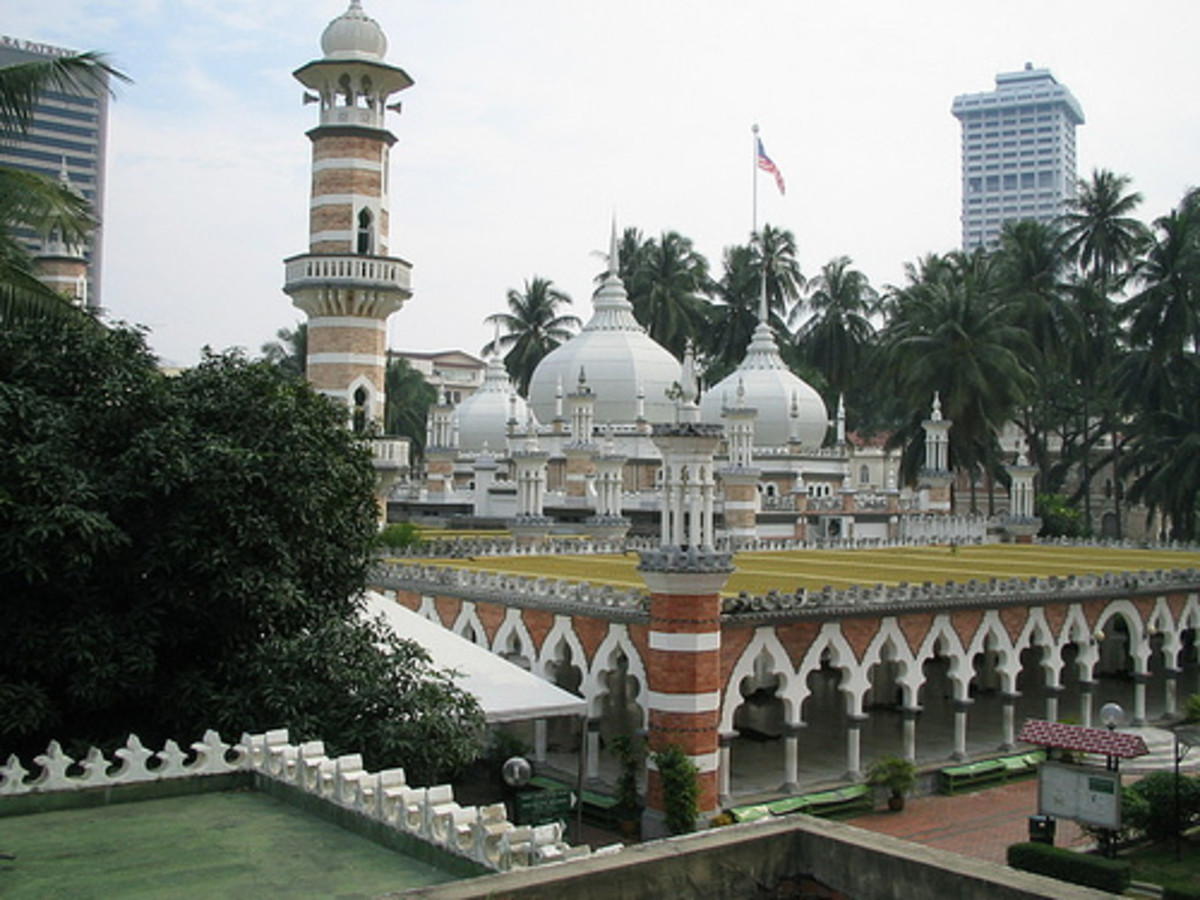
Overview of Malaysia’s Religious Diversity
Introduction to Malaysia’s Religious Landscape
Malaysia is a remarkable tapestry of cultures, where various religions coexist harmoniously. Islam, Christianity, Buddhism, and Hinduism are the predominant faiths, illustrating the country’s cultural richness. Each religion contributes to Malaysia’s vibrant identity, making it an exciting destination for travelers seeking spiritual and cultural experiences.
Importance of Religious Sites in Malaysia
Religious sites in Malaysia are not just places of worship; they are crucial to the nation’s social fabric. Whether it’s the grandeur of mosques, the serenity of temples, or the warmth of churches, these sites illustrate the beliefs and values of diverse communities.
Key points of interest include:
- Cultural Insights : Each site offers unique perspectives into the local customs and traditions.
- Tourist Attractions : Many religious sites are major tourist destinations, attracting visitors from around the globe.
- Community Engagement : These places foster community spirit and promote understanding among different faiths.
Exploring Malaysia’s religious sites can be both enlightening and enriching, offering visitors a deeper understanding of the nation’s diverse heritage.

Islam in Malaysia
History and Significance of Islam in Malaysia
Islam has deep roots in Malaysia, dating back to the 12th century when traders and scholars introduced the religion. Today, it serves as the foundation of the nation’s identity and is practiced by about 60% of the population. Malaysia’s unique interpretation of Islam emphasizes moderation and inclusivity, making it a vital element in sociopolitical structures.
Famous Islamic Sites in Malaysia
The Islamic heritage is beautifully showcased through several iconic sites that tell stories of faith and history. Here are some must-visit locations:
- Masjid Negara (National Mosque) : An architectural marvel in Kuala Lumpur, known for its stunning blue dome and vibrant gardens.
- Putra Mosque : Located in Putrajaya, it features striking pink domes and offers a serene environment for reflection.
- Sultan Ahmed Shah State Mosque : In Kuantan, this mosque is a blend of traditional Islamic design and modern aesthetics.
Visiting these sites not only allows for spiritual appreciation but also provides insight into the rich tapestry of Malaysia’s Islamic heritage. Each mosque tells its own story, inviting visitors to explore the deep significance of Islam in Malaysian culture.

Christianity in Malaysia
Presence and Influence of Christianity
Christianity holds a significant place in Malaysia’s multicultural landscape, embraced by approximately 9% of the population. With roots that stretch back to the colonial era, it has flourished alongside other faiths, contributing to Malaysia’s rich tapestry. This faith often promotes community values and charity, exemplifying its impact far beyond spiritual realms.
Notable Christian Sites to Visit
If you’re keen to explore Malaysia’s Christian heritage, there are several noteworthy sites that offer both beauty and history:
- St. Mary’s Cathedral : Located in Kuala Lumpur, this stunning structure showcases Gothic architecture and serves as the mother church for Catholics in the Archdiocese.
- Christ Church Melaka : Dating back to 1753, this church boasts a vibrant red exterior and is one of the oldest Protestant churches in Malaysia, reflecting its Dutch colonial past.
- Sacred Heart Cathedral : Situated in Kuching, it is known for its beautiful stained glass and peaceful ambiance, providing a welcoming space for worship.
Each visit to these sites offers insights into the religious life of Malaysia’s Christian communities and their enduring legacy, bridging cultures in a unique way.
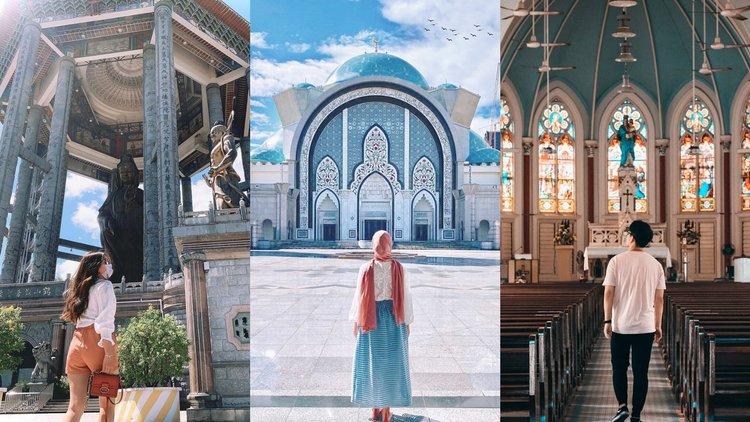
Buddhism in Malaysia
Spread of Buddhism in Malaysia
Buddhism has been a significant part of Malaysia’s heritage since the 3rd century, largely introduced by traders and travelers from India and China. Today, it is practiced by about 19% of the population, deeply influencing local culture, art, and traditions. Its principles of peace and compassion resonate throughout communities, fostering harmony among Malaysia’s diverse populace.
Prominent Buddhist Temples and Monasteries
For those interested in exploring Malaysia’s Buddhist landmarks, several temples and monasteries stand out for their beauty and spiritual significance:
- Kek Lok Si Temple : Located in Penang, this is the largest Buddhist temple in Malaysia, known for its stunning architecture and a massive statue of the Goddess of Mercy, Kuan Yin.
- Thean Hou Temple : Perched on a hill in Kuala Lumpur, this temple showcases intricate designs and offers panoramic views of the city, making it a popular spot for both worshippers and tourists.
- Buddha Tooth Relic Temple : Situated in the bustling city of Kuala Lumpur, this temple houses a relic believed to be a tooth of Buddha and serves as a cultural center for the community.
These sites provide a serene escape, allowing visitors to appreciate not only the religious practices but also the artistry that characterizes Malaysia’s Buddhist heritage. Each temple tells a story, inviting travelers to connect with the teachings of Buddhism in a vibrant and meaningful way.

Hinduism in Malaysia
Cultural Impact of Hinduism
Hinduism has significantly shaped Malaysia’s cultural landscape, particularly in states like Penang and Selangor. With around 6% of the population identifying as Hindus, their traditions and festivals create vibrant celebrations throughout the year. Elements such as colorful festivals, traditional cuisine, and rich art forms showcase Hinduism’s deep roots and profound influence in Malaysian society.
Must-See Hindu Temples in Malaysia
For those eager to explore the spiritual heritage of Hinduism in Malaysia, several temples stand out as cultural gems:
- Batu Caves : Located just outside Kuala Lumpur, this iconic site features a towering statue of Lord Murugan and a series of caves that form a stunning shrine, attracting thousands during the annual Thaipusam festival.
- Sri Mahamariamman Temple : Situated in Kuala Lumpur, this is the oldest Hindu temple in the city, renowned for its intricate sculptures and vibrant festivals that celebrate various Hindu deities.
- Penang Hindu Endowment Board : This site not only serves as a place of worship but also as a center for Hindu community activities, fostering cultural heritage through events and educational programs.
Visiting these temples offers a unique glimpse into Hindu traditions and their celebration of life, inviting visitors to experience the warmth and hospitality of the local Hindu community. Each temple tells a rich story of devotion, artistry, and cultural heritage.
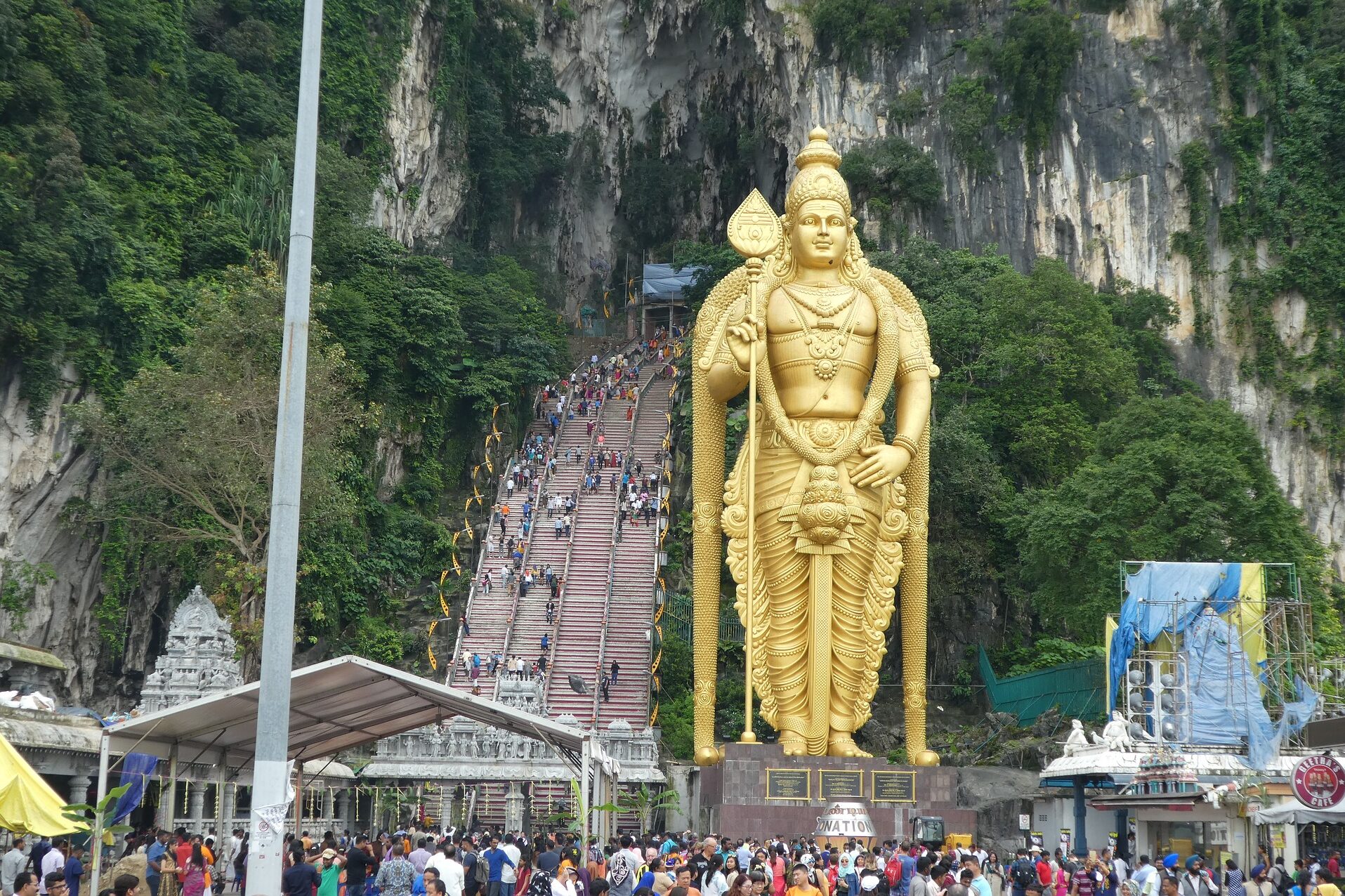
Other Religious Practices in Malaysia
Sikhism, Taoism, and Other Minority Religions
Beyond the major religions, Malaysia is home to various minority faiths, enriching the nation’s spiritual landscape. Sikhism has a strong presence, especially in urban areas, while Taoism blends seamlessly with local customs through practices that emphasize harmony with nature. Each community contributes unique perspectives to Malaysia’s thriving culture of tolerance and acceptance.
Unique Religious Sites Across Malaysia
Exploring Malaysia reveals many lesser-known yet captivating religious sites:
- Gurdwara Sahib : Found in Kuala Lumpur, this Sikh temple welcomes everyone regardless of faith, showcasing the principles of equality and community service.
- Cheng Hoon Teng Temple : As Malaysia’s oldest Taoist temple in Malacca, it hosts traditional ceremonies and festivals and exemplifies the rich history of Chinese influence in the region.
- Nadi Sivanar Temple : Nestled in Ipoh, this temple features stunning architecture dedicated to Lord Shiva, enhancing the area’s spiritual heritage.
Visiting these various religious sites offers a chance to appreciate Malaysia’s rich tapestry of beliefs and practices, each adding a unique thread to the cultural fabric of the nation. They serve as reminders of the harmonious coexistence that defines this extraordinary country.

Interfaith Harmony and Religious Tolerance in Malaysia
Government Policies on Religious Freedom
In Malaysia, the government actively promotes religious freedom as a cornerstone of its multicultural identity. Policies are in place to ensure that all religions can be practiced openly, fostering an environment of respect and understanding. Laws protect the rights of different faiths, demonstrating the country’s commitment to maintaining harmony among its diverse population.
Examples of Interfaith Coexistence
The spirit of interfaith harmony is evident in various aspects of Malaysian life:
- Festivals Together : Many communities celebrate each other’s festivals, such as Muslims joining Hindus for Deepavali and Christians partaking in Hari Raya celebrations, exemplifying unity.
- Interfaith Dialogues : Regular events and discussions facilitate understanding among different faith groups, encouraging dialogue and collaboration.
- Community Services : Joint community projects, such as food drives, are commonplace, uniting people across religious lines for a common cause.
These examples underscore the strength of interfaith relationships in Malaysia, showcasing how diverse beliefs can coexist harmoniously. Such practices enrich the cultural landscape, making Malaysia a shining example of tolerance and mutual respect.

Conclusion and Recommendations for Visiting Religious Sites
Benefits of Exploring Malaysia’s Religious Diversity
Exploring Malaysia’s religious diversity offers a wealth of benefits for visitors and locals alike. It fosters deeper understanding of different cultures, encourages empathy, and highlights the beauty of coexistence. Engaging with varying faiths allows travelers to appreciate the rich history and vibrant traditions that define Malaysia.
Tips for Respectful Visits to Religious Sites
To enhance your experience when visiting religious sites, consider these helpful tips:
- Dress Appropriately : Many places of worship require modest attire. Ensure your clothing covers shoulders and knees.
- Observe Protocols : Follow local customs, such as removing shoes before entering sacred spaces.
- Be Mindful of Photography : Always ask for permission before taking photos, particularly in places of worship.
By approaching these sites with respect and an open heart, visitors can enjoy a more meaningful interaction with Malaysia’s diverse religious tapestry. Each visit becomes an opportunity for learning and connection, enriching one’s travel experience.

